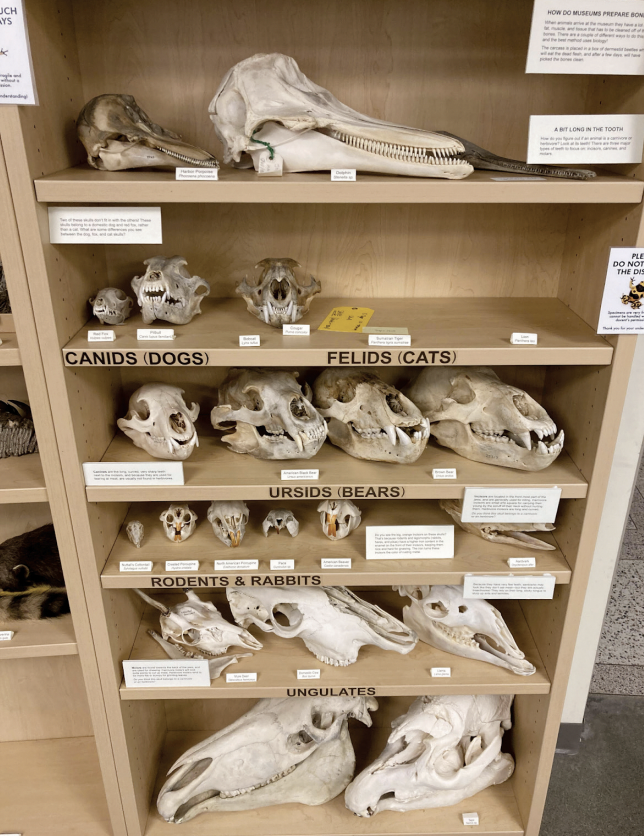
By Ari Lauer-Frey
A deeply-saturated pink flamingo wing, a tooth from the colossal sperm whale, a crimson-rumped toucanet. These are a few examples of the many specimens exhibited at the University’s latest Night at the Museum event, which took place on February 16. Night at the Museum is a recurring, public-friendly display of the captivating collection of preserved animals, insects, skeletons, and fossils within the University’s Slater Museum of Natural History (A review committee is currently assessing the request to remove “Slater” from the museum’s title). The theme of this most recent showing was “Darwin’s Voyage Around the World,” a celebration of the scientist’s 214th birthday.
Charles Darwin, famous for his contributions to evolutionary theory and his concept of natural selection, was a 19th-century naturalist whose travels around the world — and the specimens he collected along the way — added greatly to our modern knowledge of the natural world. Many of his discoveries took place during the five years he spent visiting many parts of the globe on the ship HMS Beagle.
The University event, which took place on the second floor of Thompson Hall in the Slater museum, reflected the range of Darwin’s travels. Visitors were given mini passports, which were stamped as they embarked on their own journey around the world. Many of the tables that filled the space surrounding the Slater Museum represented places Darwin visited during his travels, including Europe, South America, Australia and Africa, as well as the animals he may have encountered along the way.
The night was clearly structured around and in celebration of Darwin and his discoveries. However, there was a clear effort made to ensure this remembrance was well-rounded and considerate of the full history. There were comical moments, such as the display of a beagle skeleton wearing a party hat as a nod to Darwin’s affinity for dogs as well as the name of the famous ship he used for his travels. But it was ensured that Darwin was not blindly named the night’s hero. One table recognized the work of others who contributed to Darwin’s success and experienced little of it for themselves. The most notable example was that of John Edmonstone, a formerly enslaved man from Guyana who taught Darwin the skill of taxidermy, which was essential for the preservation of the discoveries he made throughout his travels.
The Night at the Museum was in no way limited to a celebration of Darwin. The event was also an opportunity for both students and those of the larger Tacoma community to experience the University’s vast collection. Visitors were able to learn about the specimens and important histories surrounding them from the enthusiastic and knowledgeable volunteers, most of whom were students. One table explained the migrational patterns of different birds, complete with a display of an albatross wing, a bird famous for its long migration routes. Another explained the very current and important issue of illegal bio-trading, the unethical production and sale of animals and animal products, such as the farming of Chinese giant salamanders.
It was clear that the volunteers had put significant work into making it an enjoyable and meaningful experience for all involved. Inquisitive visitors had the opportunity to dive deep into these volunteers’ knowledge. But there were opportunities for other forms of engagement, too. There was a coloring room dedicated to the younger audience. And on the other extreme of the experience, there was a room for skinning demonstrations revealing the necessary work done to prepare animals for faculty and student research. This room attracted the younger ones as well, as many hesitant parents could be seen following their eager children into a room of guts and feathers.
The Night at the Museum is a truly special occasion, as it is one of the few times in which students and the public alike have the chance to interact with the incredibly diverse and fascinating collection of the Slater Museum. For those who missed this showing, there will be another chance to view the collection at the next Night at the Museum on April 6.
